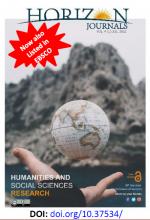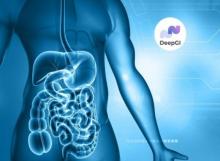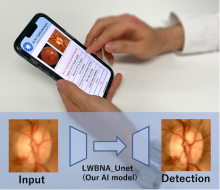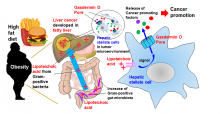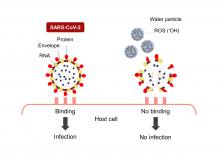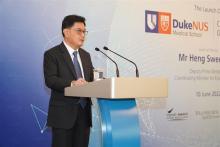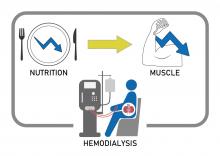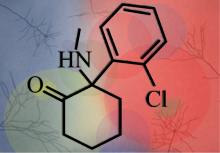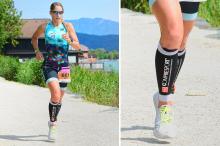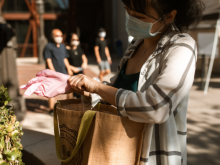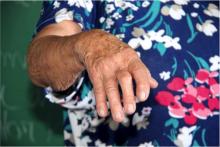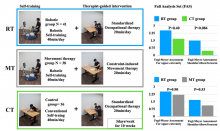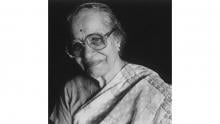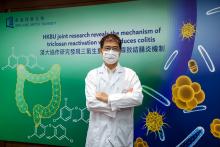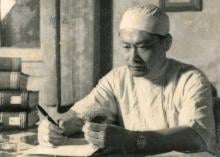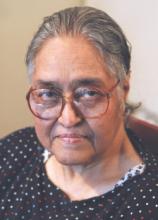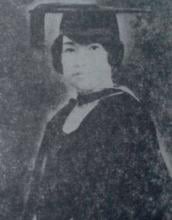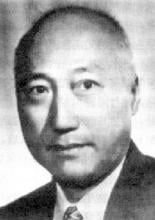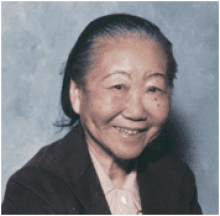Health
News
28 Jun 2022
I am pleased to announce that a Regular Issue, JUL 2022 of the Journal of Humanities & Social Sciences Research, Vol. 4 (1) Jul. 2022 has been published ahead of time on 15 Jun 2022 and is now live at the Journal’s webpage. Explore this Issue at https://www.horizon-jhssr.com/current-issue.php
28 Jun 2022
Chula Engineering and Chula Medicine co-invent an innovative device for a rapid and accurate gastrointestinal cancer detection hoping to foster preventive medicine and reduce the number of cancer patients.
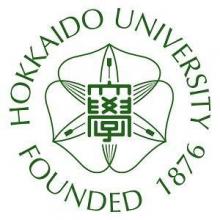
28 Jun 2022
Hokkaido University (Location: Sapporo, Hokkaido, Japan) and NEC Corporation (NEC; TSE: 6701) have concluded a collaborative agreement to promote the realization of a “safe and secure society through spatial sensing" that helps to prevent the spread of illness.
24 Jun 2022
Asia Research News monitors the latest research news in Asia. Some highlights that caught our attention this week are using your breath to unlock your phone, the first successful launch of a Korean rocket, and the oldest bellybutton to date.
24 Jun 2022
Automation in disease diagnosis is reliant on deep learning models that can accurately and efficiently identify measurements of tumors, tissue volume, or other sorts of abnormalities. Now, researchers from Tohoku University have unveiled a new, resource-light model capable of identifying many common eye diseases.
22 Jun 2022
The formation of cell membrane pores is a major mechanism by which cancer-inducing proteins are released and hasten tumor development in nonalcoholic steatohepatitis-associated liver cancer.
22 Jun 2022
New dinosaur species used claws to graze along the coast, More accurate rainfall predictions, Magnetism helps futuristic cell research, Do compression garments facilitate muscle recovery? Science journalism and why it matters for democracy and our Image of the month. Read all in the June's Editor's Choice and this month's Asia Research News 2022 magazine pick - Lessons from the dead.
17 Jun 2022
Everyone knows that exercise brings physical and psychological benefits. A new study suggests that virtual reality exercise induces similar effects, meaning those with limited mobility may be able to improve their mental well-being.
17 Jun 2022
A research group led by Osaka Metropolitan University and Panasonic Corporation Living Appliances and Solutions Company discovered how nano-sized electrostatic atomized water particles disinfect SARS-CoV-2. The nano-sized electrostatic atomized water particles developed by Panasonic Corporation have an electron rich nano-sized water shell that contains reactive oxygen species. The researchers showed that the water particles damage the viral envelope, protein, and RNA. They also revealed that the damaged virus did not bind to host cells. These phenomena are considered the main inactivation mechanism of the nano-sized electrostatic atomized water particles on SARS-CoV-2.
13 Jun 2022
Themed “Roll Back Dengue” and organised as a hybrid event, the three-day summit will congregate dengue community including over 200 clinicians, researchers, government public health leaders and policymakers across Asia
11 Jun 2022
Duke-NUS is working with the Bill and Melinda Gates Foundation to develop the Asia Pathogen Genomics Initiative (APGI) to improve regional genomic surveillance and sequencing capacity. New Centre for Outbreak Preparedness will support APGI and work closely with national and global partners to enhance regional capacity to predict, prepare and respond to future health threats.
10 Jun 2022
SINGAPORE, June 9, 2022– Takeda Pharmaceutical Company Limited (“Takeda”) today announced that its dengue vaccine candidate, TAK-003, prevented 61% of symptomatic dengue cases and 84% of hospitalised cases with no important safety risks identified in the overall population.
09 Jun 2022
A new apparatus uses magnets to remotely control guidewires through tiny, tortuous blood vessels for the treatment of cardiovascular diseases.

06 Jun 2022
Partnership seeks to deepen symbiotic industry-academia collaborations in applied research and talent upskilling. First-of-its-kind made-for-Asia sustainable R&D to develop kale stems as prebiotics
01 Jun 2022
Scientists at Osaka Metropolitan University utilized a Japan-developed, objective, and simple nutritional indicator called the Nutrition Risk Index (NRI) to unveil a long-suspected yet unverified relationship between sarcopenia and malnutrition in end-stage kidney disease patients. Their findings confirmed that malnutrition contributes to sarcopenia, which can be detected through NRI.
27 May 2022
Asia Research News monitors the latest research news in Asia. Some highlights that caught our attention this week are a wormlike robot, shady spider sales, and different ways of keeping a healthy heart.
25 May 2022
Among anesthetics, ketamine has a unique effect: it also acts as an antidepressant. A research team led by Osaka Metropolitan University Professor Makoto Kondo linked ketamine to brain regulation of IGF-1, which works independently of other ketamine-associated factors. The discovery may help untangle ketamine’s positive and negative effects, allowing future drug development to target IGF-1 directly.
25 May 2022
As physical activity (PA) has significant benefits for health and fitness, the WHO recommends that children and adults engage at least 60 minutes and 150 minutes of moderate-intensity PA per week, respectively. However, owing to global urbanisation, technological advances, and increasing convenience in daily activities, inadequate PA in all aspects of life has become a major public health concern. In Hong Kong, 71% of adults do not meet the WHO PA recommendations. This persistent and growing health-related problem indicates an urgent need to develop an intervention programme that can effectively promote PA at the individual, family, community, and city-wide levels. Therefore, a set of community-based family ‘holistic health’ intervention programmes were developed, implemented, and evaluated in the previous Happy Family Kitchen Movement (HFKM) project to promote well-being and health in Hong Kong.
23 May 2022
The antibiotic rifampicin is shown as a potential medicine for preventing Amyotrophic Lateral Sclerosis (ALS) and Frontotemporal dementia (FTD).
19 May 2022
Thought to enhance muscle recovery, compression garments are commonly worn by athletes and people engaging in exercise. Yet, an international research team’s systematic review provides evidence to the contrary.
18 May 2022
A study by Japanese researchers showed that getting a mild case of COVID-19 doesn’t translate to lower chances of becoming a long-hauler. And that sex and the presence of long-term symptoms are risk factors for post-COVID psychological distress.
17 May 2022
Adenosine triphosphate (ATP) secreted from sensory neuron-interneuron crosstalk is key to the spreading of inflammation across joints, acting as a neurotransmitter and inflammation enhancer.
13 May 2022
Molecular robots work cooperatively in swarms, LED lights made from rice husk, Muonic x-rays safely see inside samples, Making a luminescent material shine brighter and How to counter vaccine hesitancy, Read all in the May Editor's Choice and this month's Asia Research News 2022 magazine pick - Absorbing impact: Inside the Head of a Woodpecker.
11 May 2022
Strokes have a debilitating effect on quality of life; the combination of cognitive and physical effects can be especially devastating. A new study from Osaka Metropolitan University Graduate School of Rehabilitation Science showed that moderate to severe hand and arm paralysis was dramatically improved with the use of robotic therapy, for chronic stroke patients with upper extremity hemiplegia in Japan, as reported in the journal Stroke.
05 May 2022
Giants in History: Ground-breaking cancer researcher Kamal Jayasing Ranadive (8 November 1917 – 11 April 2001) advanced the understanding of the causes of leukaemia, breast cancer and oesophageal cancer through the use of animal models.
03 May 2022
A Hong Kong Baptist University (HKBU) collaborative research study has revealed that certain gut microbial enzymes mediate the reactivation of triclosan (TCS) from its inactive glucuronide metabolite. TCS is an antimicrobial agent commonly used in a wide range of consumer products, and it is associated with the development of colitis.
Events
Sorry, no events coming up for this topic.
Researchers
Sorry, no researchers coming up for this topic.
- « first
- ‹ previous
- 1
- 2
- 3
- 4
Giants in history
Vietnamese surgeon Tôn Thất Tùng (10 May 1912 – 7 May 1982) developed a pioneering technique that reduced the risks and mortality rate of liver operations.
Chinese biochemist Chi Che Wang (1894 - 1979), one of the first Chinese women to study abroad, advanced to prominent research positions at American institutions including the University of Chicago and the Northwestern University Medical School.
Ruby Sakae Hirose (1904 – 1960) was a Japanese-American scientist whose research contributed significantly to our understanding of blood clotting, allergies and cancer.
Flora Zaibun Majid ( 1939–2018) was an accomplished Bangladeshi researcher in botany and nutrition science and the first female chairperson of the Bangladesh Council of Scientific and Industrial Research.
Iranian physician and bacteriologist Azar Andami (8 December 1926 – 19 August 1984) developed a cholera vaccine to combat an outbreak that swept through the Middle East, India, Southeast Asia, and Africa in 1937.
Irene Ayako Uchida’s (8 April 1917 – 30 July 2013) strides to understand genetic diseases such as Down syndrome paved the way for early screening of chromosomal abnormalities in foetuses.
Baron Kitasato Shibasaburo (29 January 1856 – 13 June 1931) was a Japanese physician and bacteriologist whose work led to a new understanding of preventing and treating tetanus, diphtheria and anthrax.
Maggie Lim (5 January 1913 – November 1995) was a Singaporean physician who promoted family planning and expanded the access to clinics to improve the quality of life for mothers and children in Singapore’s early days.
By isolating soil microorganisms and studying the compounds they produce, Satoshi Omura (born 1935) discovered almost 500 organic compounds with unique properties that were produced by these microorganisms, including many new antibiotics.
The founder of the Adyar Cancer Institute in India, Muthulakshmi Reddy (30 July 1886 – 22 July 1968), fought to uplift women and girls from impoverished situations.
Chinese-American virologist and molecular biologist Flossie Wong-Staal (27 August 1946 – 8 July 2020) was the first scientist to clone HIV and determine the function of its genes.
Maharani Chakravorty (1937 – 2015) was one of India’s earliest molecular biologists whose research paved the way for advances in the treatment of bacterial and viral infections.
Archana Sharma (16 February 1932 - 14 January 2008) conducted research into plant and human genetics that expanded the understanding of both botany and human health. In relation to botany, she uncovered the means by which asexually-reproducing plants evolve into new species.
The first Thai woman to receive a degree in medicine, Margaret Lin Xavier (29 May 1898 – 6 December 1932), is best remembered for her compassion towards her less privileged patients.
In 1915, pathologist Katsusaburo Yamagiwa and his research assistant Koichi Ichikawa became the first to prove that chronic exposure to chemicals can cause cancer.
Filipino chemist and pharmacist Manuel A. Zamora (29 March 1870 – 9 July 1929) is best remembered for his discovery of the tiki-tiki formula to combat beriberi, a disease caused by Vitamin B1 deficiency.
After witnessing death and suffering as a youth in his home village during World War II, Nguyễn Tài Thu (6 April 1931 – 14 February 2021) set his sights on alleviating pain by becoming a doctor. After studying Traditional Chinese Medicine in China in the 1950s, Thu returned to Vietnam to serve in military hospitals. Eventually, he became the country’s foremost practitioner of acupuncture, a technique he first learned by inserting needles into himself.
David T. Wong (born 1936) is a Hong Kong-born American neuroscientist who is best known for discovering the antidepressant drug fluoxetine, better known as Prozac.
Indian organic chemist Asima Chatterjee (1917 to 2006) studied the medicinal properties of plant products, especially compounds known as vinca alkaloids.
Hsien Wu (24 November 1893 – 8 August 1959) is widely regarded as the founder of biochemistry and nutrition science in China. He was the first to propose that protein denaturation was caused by the unfolding of the protein, instead of chemical alteration.
Umetaro Suzuki (7 April 1874 – 20 September 1943) was a Japanese scientist best remembered for his research on beriberi, a disease caused by vitamin B1 deficiency, characterized by limb stiffness, paralysis and pain.
Syed Qasim Mehdi (13 February 1941 – 28 September 2016) was a Pakistani molecular biologist who was a founding member of the Human Genome Diversity Project (HGDP), which assessed human diversity by studying human migration, mutation rates, relationships between different populations, genes involved in height and selective pressure.
Tsai-Fan Yu (1911 – 2 March 2007) was a Chinese-American physician and researcher who was the first female full professor at Mount Sinai School of Medicine. She discovered that gout, a condition characterized by the painful inflammation of joints, was caused by elevated levels of uric acid in the bloodstream.
Min Chueh Chang (10 October 1908 – 5 June 1991) was a Chinese-American biologist who studied fertilization in mammalian reproduction.
A Japanese surgeon, Tetsuzo Akutsu (20 August 1922 – 9 August 2007) built the first artificial heart capable of keeping an animal alive.
Ogino Ginko (3 March 1851 – 23 June 1913) was the first registered female doctor to practise modern medicine in Japan.



